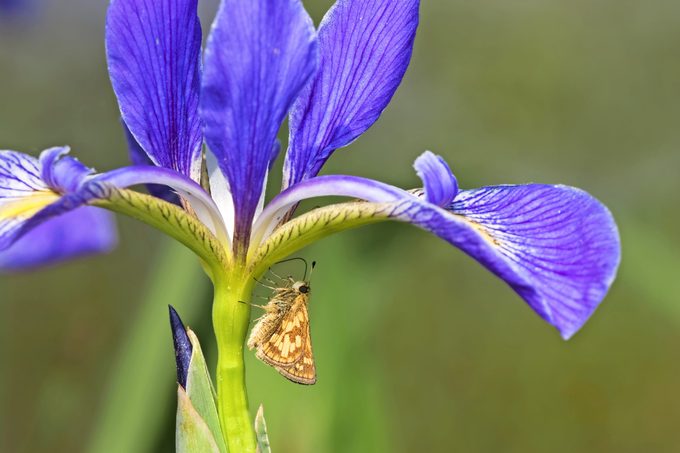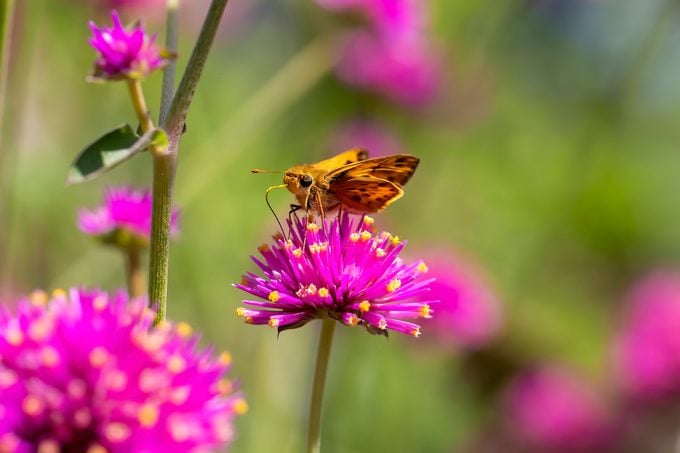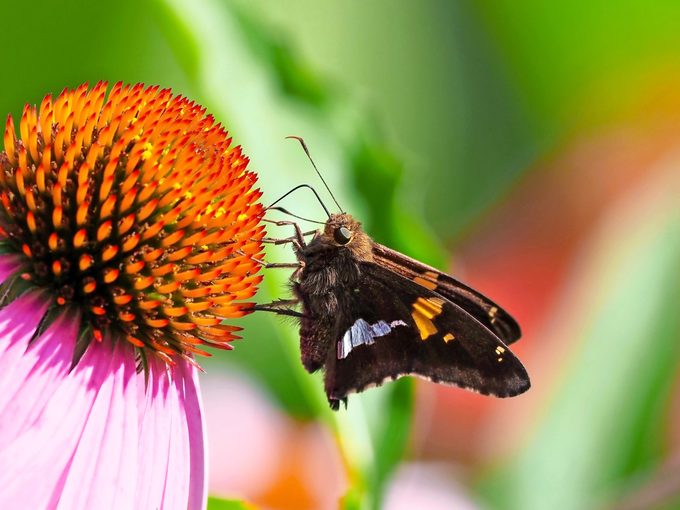Meet the Vast (and Fast!) Skipper Butterfly Family
Updated: May 16, 2024
Small and speedy, skipper butterfly species often fly under the radar. But these fascinating pollinators add lively interest to any garden.

While admiring a stand of coneflowers in the garden you may be luck enough to notice a skipper butterfly. They’re small, shaped like a narrow triangle, and can be found crawling across a bloom. Leaning in closer and you’ll see that it has a fuzzy body and an orange-and-black wing pattern. When it zooms into the air, it whirls around in fast, erratic zigzags before resting on another flower.
On This Page
Types of Skipper Butterflies
Skippers belong to the order Lepidoptera, the great worldwide group that includes all the butterflies and moths. At one time they were considered a third category within the order, but most experts now agree that skippers are butterflies. They make up a distinctive family called the Hesperiidae.

Several features set the skippers apart from other butterflies. They have stout bodies, big heads and very rapid, erratic flight. Smaller than the average butterfly, most are not brightly colored. They wear tones of brownish orange, black or gray.
Skippers have one big thing going for them: variety. The United States and Canada have well over 200 species of skippers, which make up about a third of the butterfly diversity in the two countries. With so many kinds, it’s challenging to identify them. Some butterfly-watchers joke that they’re called skippers because it’s easier to just skip them! But a few are readily recognizable. It’s also easy to separate the skippers into two major groups: spread-wings and grass skippers.
Check out the best tips for watching and photographing butterflies.
Spread-Wing Skipper Butterflies

Almost 80 species of spread-wing skippers are regularly found in the U.S. and Canada. Several others, including some with bright colors, rarely wander in from Mexico.
Spread-wings usually sit with their wings stretched out to the sides (as the name suggests). They also hold them above their backs, the same postures as most typical butterflies. Mostly black, dark brown or gray, they usually have a wingspan of less than 2 inches. This makes them easy to overlook.
An attention-grabbing exception is the silver-spotted skipper, a common flier from coast to coast in the U.S. and parts of southern Canada. It has a wingspan of almost 2 inches and a golden stripe across each forewing, but its most identifying mark is a big silver-white spot on the underside of each hindwing.
Caterpillars of silver-spotted skippers feed on locust trees, wisteria vines and many other plants, while adults visit a wide variety of flowers.

Another spread-wing seen all across the continent is the common checkered-skipper. It’s very small (with a wingspan of just over an inch). Bold black-and-white checkering separates it from other butterflies in yards and gardens. Adults fly fast and low, often landing on bare spots on the ground and visiting blooms such as clover or marigolds.

The long-tailed skipper, more of a southeastern specialty, is common from Texas to Maryland. Long tails on the hindwings and a blue-green sheen on its body and wing bases make it easily recognizable. More migratory than most skippers, it sometimes wanders north, even reaching New England and the Great Lakes.

Other groups such as duskywings, cloudywings or sootywings are much harder to identify, all being blackish with white dots. It’s usually enough of an accomplishment just to recognize them as spread-wing skippers.
Grass Skipper Butterflies

Found everywhere from the Arctic to the tropics, grass skippers make up the most diverse group within the family. More than 120 species of grass skippers live throughout the U.S. and Canada, so at least a few kinds can be found in any given region.
Even among this varied throng, some things are consistent. Most species of grass skippers are small, and a few are truly tiny. The majority are some shade of orange with darker markings, but some are gray or black. Most have a narrow triangular appearance when sitting and they often adopt a posture called the jet-plane position.
In this posture, they hold their hindwings flattened out to the sides and their forewings raised above their backs, which is reminiscent of the shape of certain fighter jets. It’s appropriate, too, because most grass skippers are amazingly fast fliers.
The grass skipper butterfly group got its name because the caterpillars use grasses or related plants as their host plants. Some are specialized to feed only on certain native grasses or sedges and, as a result, a few have become rare or endangered as the natives are crowded out. But others are more adaptable, feeding on a variety of grasses, and they continue to be common.

For example, Peck’s skippers are quite numerous across the northern and central states because Kentucky bluegrass and other widespread grasses are their host plants.

The fiery skipper has adapted to feed on Bermuda grass, a popular turf grass that was introduced to North America from Africa (not Bermuda) in the 1750s. Now abundant across the South, fiery skippers wander northward every year, sometimes even being spotted around the Great Lakes.
How to Attract a Skipper Butterfly

Flowers that attract other butterflies, such as coneflowers, asters, milkweeds and many more garden favorites, also attract adult skippers.
Host plants for spread-wing skipper caterpillars are so varied that the best general advice for most gardeners is to include as many native plants as possible in your landscaping. For the grass skipper group, try researching native grasses in your area and adding some as accent plants in your garden. A native plant nursery or your state or county extension service should be able to point you to some good choices.
Finally, it’s important to avoid using insecticides, which would kill skippers and other pollinators. Although they’re often overlooked, skippers are fascinating. Watch closely in your garden and you’re likely to discover that some of these little butterflies are regular visitors.
Next, check out more beautiful butterfly pictures you HAVE to see.
Why Trust Us
For nearly 30 years, Birds & Blooms, a Trusted Media Brand, has been inspiring readers to have a lifelong love of birding, gardening and nature. We are the #1 bird and garden magazine in North America and a trusted online resource for over 15 million outdoor enthusiasts annually. Our library of thousands of informative articles and how-tos has been written by trusted journalists and fact-checked by bird and garden experts for accuracy. In addition to our staff of experienced gardeners and bird-watchers, we hire individuals who have years of education and hands-on experience with birding, bird feeding, gardening, butterflies, bugs and more. Learn more about Birds & Blooms, our field editor program, and our submission guidelines.





















